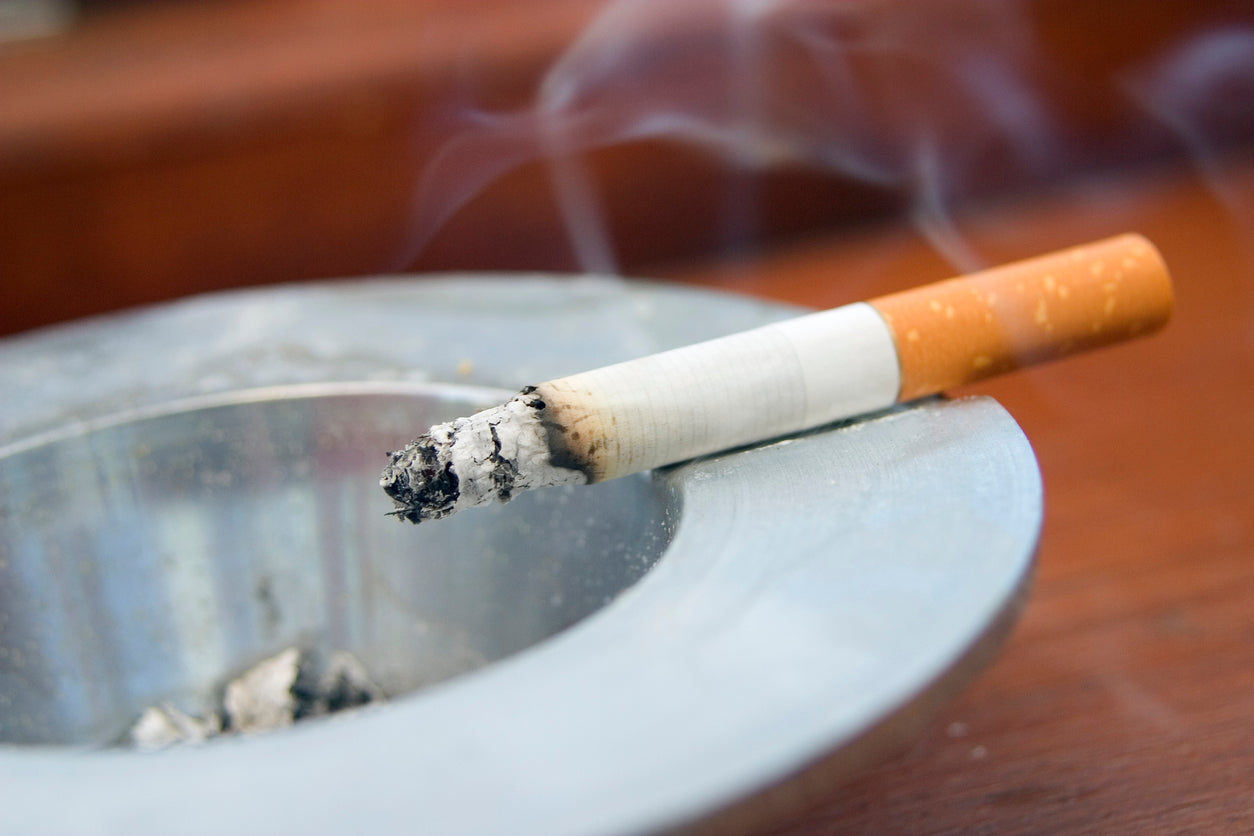The distinctive scent of cigarette smoke lingering in the air or on a piece of clothing or furniture is as unmistakable as it is unhealthy, which is why removing it from the air is crucial for anyone concerned about their health.
Beyond the tobacco at its core, cigarette smoke is composed of numerous chemicals, including such gases as carbon monoxide (CO), hydrogen cyanide (HCN) and nitrogen oxides (NOx). Volatile chemicals like formaldehyde, acrolein, benzene and certain N-nitrosamines, can also be contained in the liquid-vapor of the smoke aerosol, which also consists of nicotine, phenol, polyaromatic hydrocarbons (PAHs) and certain tobacco-specific nitrosamines (TSNAs).
Second and thirdhand smoke: how to limit exposure and effects
The best way to limit exposure to secondhand smoke—the combination of the smoke emitted from the burning cigarette plus the smoke emitted from the user’s mouth—is to distance yourself from the vicinity of the smoker.
But simply limiting your contact with smokers is not enough to prevent unwanted exposure: thirdhand smoke is also a problem. The California Department of Health describes thirdhand smoke as the phenomenon in which residue from smoke remains indoors in walls, windows and furniture. Thirdhand smoke can react with other air pollutants and stick to hair, skin and clothing, as it transfers from one location to another, even on non-smokers. This unhealthy residue can also build up and collect in dust and linger for years.

Places in the home where third hand smoke can accumulate and later disperse.
Thirdhand smoke is difficult to remove by traditional cleaning methods such as wiping or vacuuming, nor is there good evidence to suggest that even strong ventilation can remove its traces. The Center for Disease Control warns that thirdhand smoke is also linked to health risks for such diseases as asthma and cancer.
Simple ways to absorb cigarette smoke odors
So how can you remove cigarette smoke indoors? As long as no new toxins are added by someone one continuing to smoke in your environment, it is possible to eliminate the scent of cigarette smoke, if not all of the toxic effects. You can do this with some very basic and affordable products that you might already have in your home:
Vinegar: The sharp abrasiveness of vinegar can effectively cut unpleasant scents like cigarette smoke. Try mixing vinegar and lemon juice in a bottle and spraying it as a mist the way you might use an air freshener, or place bowls of white vinegar out in a room where people have been smoking overnight—by morning the smell of the smoke may be gone. If you are wiping down smooth or hard surfaces that have nicotine residue, vinegar can be used as an acidic cleaner to dissolve nicotine. And for more immediate relief of cigarette smoke odors, spray vinegar on a towel or cloth and wave it around the room for a few minutes. Note that while it may be possible to remove smoke residue from hard surfaces such as walls and furniture, research finds that it may be impossible to truly remove all smoke traces from carpets.
Baking soda and activated charcoal: Sprinkling either baking soda or activated charcoal powder (sold at pet stores) can remove cigarette odors just as it can mildew smells. If you are trying to reduce the cigarette stench in a room, you can either put the powders in open bowls, or sprinkle on a surface. To get the smell out of a small item, you can place it in a closed container with baking soda or activated charcoal (making sure the item does not touch it) for a few days.
Coffee grounds: Coffee not only wakes you up in the morning, it may help reduce odors. Try filling several coffee filters with fresh grounds, placing them in the smoke-affected area and leaving them for several days.
Technology to aid with reducing cigarette smoke odors
If the home-grown methods for absorbing the scent of cigarette smoke do not prove effective, it may be worth trying out an air purifier. However, the CDC warns that while “eliminating smoking in indoor spaces fully protects nonsmokers from exposure to secondhand smoke,” no air purifier or conventional ventilation system can fully eliminate exposure of non-smokers to secondhand smoke. So, while it is evident that the only way to fully do away with unwanted secondhand smoke exposure is by completely banning smoking in an indoor space, using an air purifier might at least help mitigate the adverse health effects and reduce the unpleasant odor.
PECO: Molekule air purifiers contain PECO technology and can remove larger smoke particles, as well as destroy the gaseous volatile organic compounds (VOCs) of smoke using a light-activated catalytic reaction. Photo Electrochemical Oxidation, or PECO, can also help with tobacco smoke odor, as the PECO process breaks down pollutants at a molecular level. LEDs activate the catalytic process, generating hydroxyl radicals which oxidize pollutants, including cigarette smoke chemicals, and breaking them down into basic components of water vapor and carbon dioxide. Unlike the traditional filters discussed below, which simply capture pollutants, PECO technology can destroy pollutants like VOCs in the air. In addition to destroying toxic chemicals from smoke, Molekule's PECO-HEPA Tri-Power filter uses a layer of HEPA to capture 99.97% of small particles like ash and soot, and a layer of carbon to adsorb odors.
Carbon: Carbon filters are the most commonly used type of filter to remove gases. They are designed to trap the gases as they pass through a bed of activated charcoal, which contains tiny pores to increase its surface area and thus creates more places on the filter to capture smoke VOCs. Gases stick to the carbon filter using a process called adsorption, which allows the gaseous pollutants to stick to the outside of the carbon. If you plan on using a carbon filter, the EPA recommends that it contains a substantive amount of carbon to increase effectiveness.
Another caveat is that carbon filters must be replaced frequently. Following the manufacturer’s guidelines for changing the filter is a good standard, though if you have any doubts or smell noxious gas, replace it immediately. Note that while carbon filters can help deal with smoke odors, tobacco smoke can land and permeate onto most surfaces and it is difficult to get rid of the smell entirely and consistently. Lastly, be aware that carbon filters do not remove dangerous carbon monoxide in homes, and you should have a separate carbon monoxide detector in your home.
HEPA: This type of air filter is rated to use mechanical filtration to capture 99.97% of particles 0.3 microns in size, which includes some smoke particles.
Conclusion
For many people, the smell of smoke is what warrants immediate attention, and so the DIY methods presented in this article are a good first line of defense for getting rid of the immediate noxious smell of smoke. But for those who are more concerned with long term health and indoor pollution, air purifiers and filters might be a better way to go. Regardless, the best and most effective way to remove the effects of cigarette smoke’s second and third-hand effects is to limit, if not entirely eliminate, your exposure to cigarette smoke.













